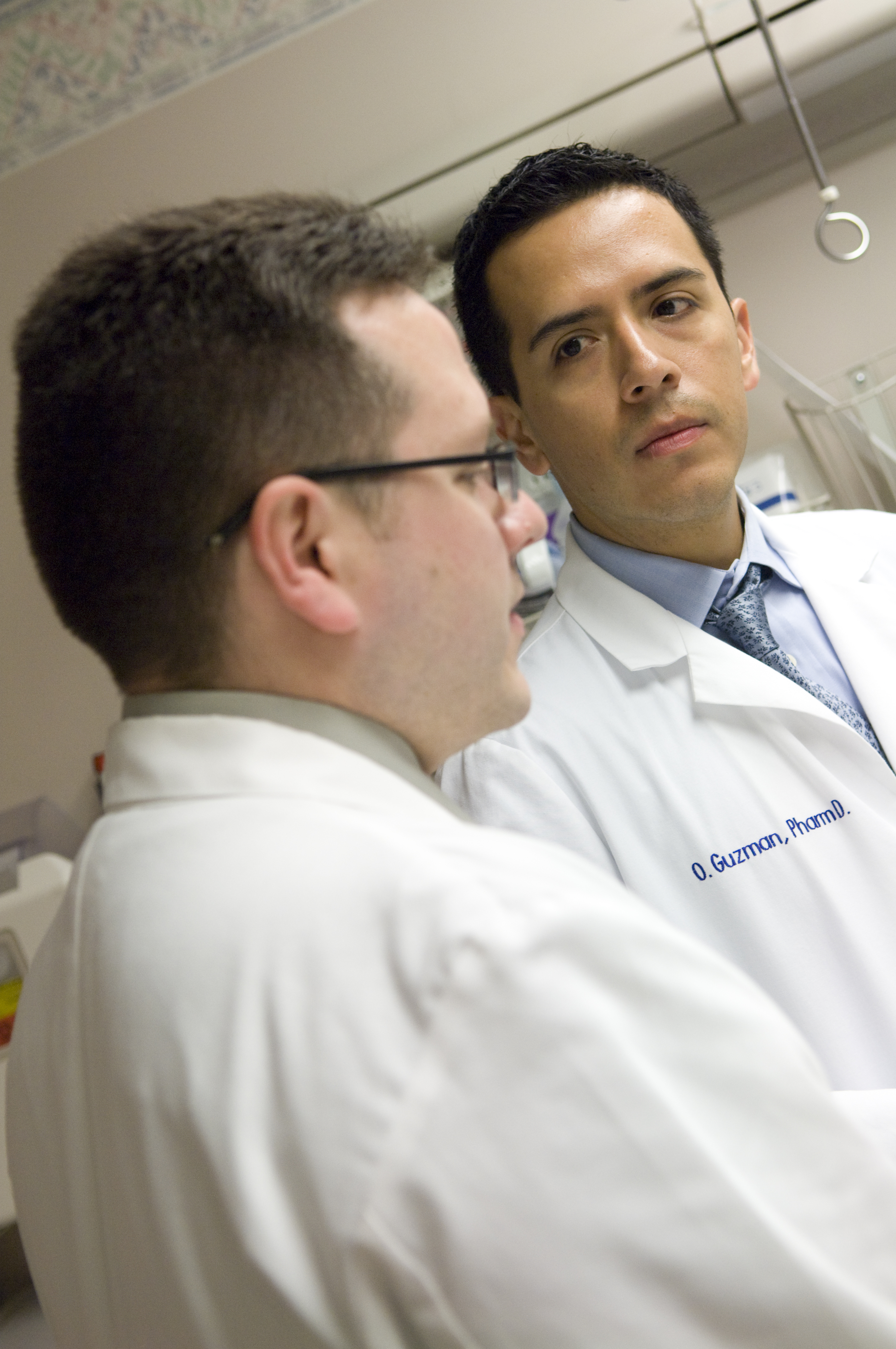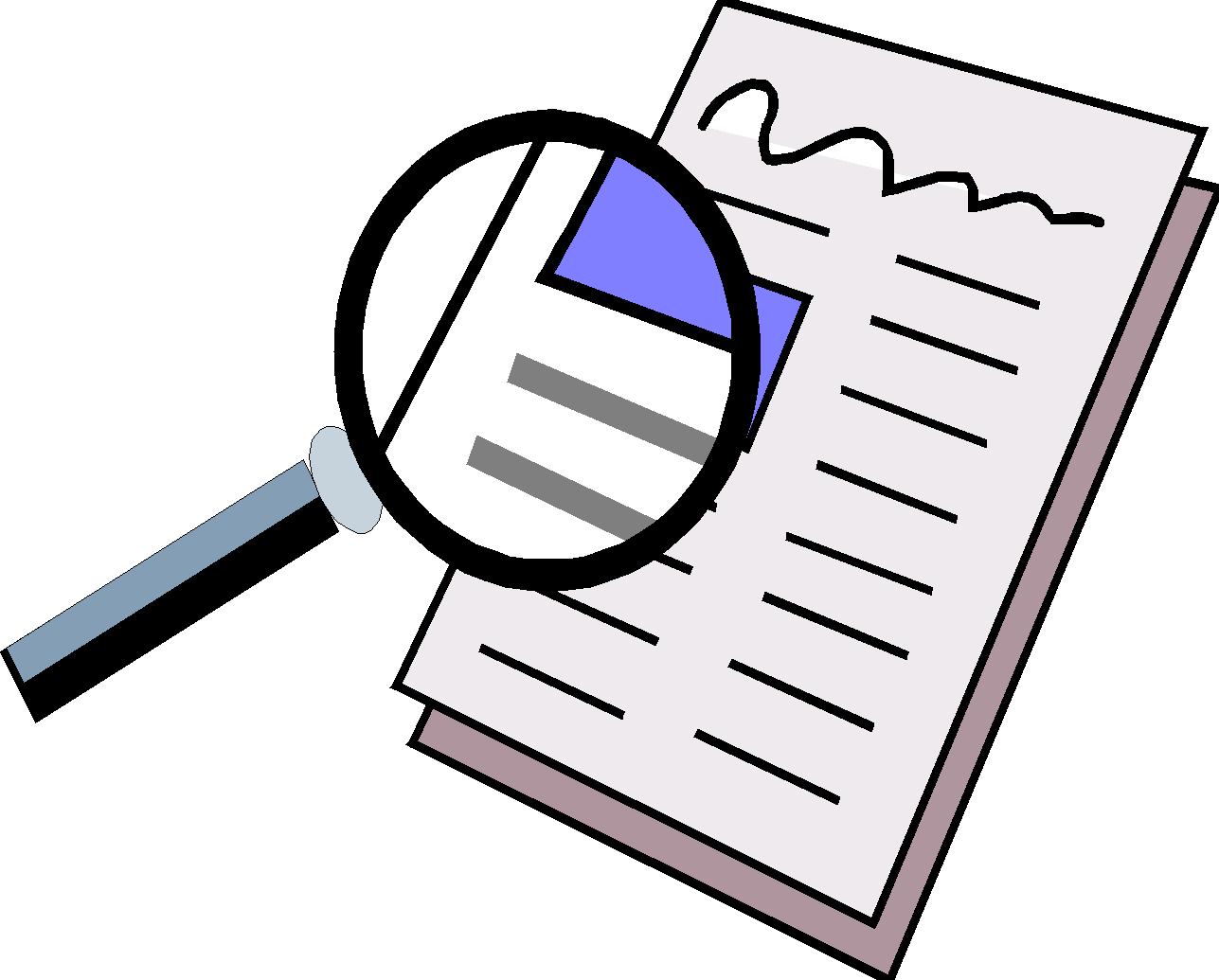Thank you for agreeing to be a pharmacy technician training program practitioner surveyor! In this role, you will have the opportunity to help uphold accreditation standards and help technician training programs improve - while learning from the programs you visit! Other benefits include becoming more thoroughly familiar with the standard and the networking opportunities you will have with other programs and surveyors.
Throughout the survey process, always keep in mind that you are a guest of the site and a representative of ASHP. It is critical that your demeanor and actions are appropriate to being a guest and reflect well on ASHP.

1. Define accreditation, it's purposes and major issues concerning accreditation.
2. Describe the steps of the survey process, including pre-survey preparation, the site visit and post-site visit follow-up.
3. Explain the responsibilities and challenges of both the practitioner and lead residency surveyor and how to effectively fulfill your role.

The formal definition of accreditation, from the "ASHP Regulations on Accreditation of Pharmacy Technician Training Programs," is: "the act of granting approval to a program conducting pharmacy technician training after the program has met requirements and has been reviewed and evaluated through an official process (document review, site survey, and review and evaluation by the Commission on Credentialing)."
Accreditation standards protect the public by setting requirements that must be met. Regulations define the processes and policies that are involved in accreditation, such as how to apply for accreditation and policies about fees.
Being accredited lets the public know that a program meets professional standards, thereby assuring quality. Accreditation allows a profession to engage in self-regulation. While it is a voluntary process, many organizations consider it essential to the integrity of their reputation. The accreditation process upholds standards and quality. In addition, by having better trained pharmacy technicians, the quality of the pharmacy profession benefits since this allows pharmacists to expand their role.
The purpose of the survey is to determine if, and how well, a program meets accreditation standards. Surveyors need to be thoroughly familiar with the ASHP accreditation standards, skillful at identifying what evidence to access to determine if the standards are being met and reviewing this evidence to make appropriate accreditation decisions. In addition, a review of the program on the survey against specific goals and objectives within the specific standards is performed.

The surveyors' task is to determine whether or not the program meets the standards and whether or not the program should be accredited. There are lead surveyors and practitioner (guest) surveyors. The lead surveyor is either an ASHP staff member or on contract with ASHP to conduct surveys.
Lead Surveyor Role
As their title suggests, they are the leader of the survey team. The lead surveyor's responsibilities include:
- Determining at what day and time the survey team should meet in the survey city prior to beginning the survey in order to discuss survey strategy
- Arranging for hotel accommodations for the survey team
- Making contact with the practitioner surveyor(s) to provide guidance for travel arrangements including when to arrive, anticipated departure time, hotel information, guidance on expenses.
- Paying expenses incurred when the survey team is together (e.g., hotel bill, meals, car rental)
- Write up survey findings
Being the final decision maker on recommendation for accreditation for voting by the ASHP Commission on Credentialing (COC). The lead surveyor provides the element of consistency on the survey team. They provide consistency in the process, conduct of the review, knowledge of the standards and regulations and keep the review in order.
- Primary contact with the site to arrange the survey.
Practitioner (Guest) Surveyor Role
The practitioner surveyor is invited by the individual on staff in the Accreditation Services Division (ASD) who does the scheduling for surveys. The practitioner surveyor is someone who has been a program director for a pharmacy technician training program or pharmacy technician educator. Practitioner surveyors must be familiar with the standards and regulations.
Each surveyor makes their own travel arrangements using ASHP's travel agency. ASHP will be responsible financially for surveyor's airfare, ground transportation, lodging and food expenses during the time on survey. The lead surveyor will generally pay for meals on his/her charge card. You can also submit your expenses for meals when not with the lead surveyor. Food and mileage, if a car is used, is reimbursed. ASHP will not pay for movies, phone or internet use. You will be provided with a travel expense form to complete and must provide receipts for expenses.
Show/hide comprehension question...
Show/hide comprehension question...
The accreditation survey can be seen as having three main phases.
1. Presurvey Preparation
2. The Site Visit
3. Post-Survey Follow-Up
Each phase has its own tasks and challenges, which are outlined beginning on the next screen.

Usually about 30 days before a survey, the practitioner surveyor receives from ASHP all survey-related materials provided by the program, including:
- The program's accreditation application
- Completed pre-survey questionnaire with attachments
- Survey itinerary (may be an early draft version developed with the lead surveyor)
- If survey is for reaccreditation, materials from the previous survey and progress reports.
- ASHP travel expense form
It is important that you review these documents carefully. In addition, you need to be thoroughly familiar with the accreditation standards and regulations so if you need to review them, you can find them here: (Note: Your primary focus should be on the standards.)
Click here or use this link for the regulations: http://www.ashp.org/DocLibrary/Accreditation/RTP-TechRegulations.aspx
Click here or use this link for the standards: http://www.ashp.org/DocLibrary/Accreditation/RTP-TechStandards.aspx
In preparation for the initial meeting of the survey team, based on a review of the program's background information, based on your review of the program's materials and your knowledge of the appropriate standards and best practices, formulate your own opinions to share with the survey team regarding areas that are, or are potentially NC (non-compliant) or PC (partially-compliant) as well as areas where more information needs to be gathered on site before a decision can be made. An initial assessment will assist to pinpoint areas for further investigation onsite to fully establish if an area is NC or PC. Click here to see a copy of the presurvey questionnaire that programs complete before a survey.
The above preparation is done individually before arriving in the survey town. You will continue the preparation together once you and the lead surveyor arrive. Come to this meeting ready to offer your opinions about areas that you think may be NC or PC or in what areas you think more information is needed to fully assess compliance with the standard. With your input, the lead surveyor will finalize a survey plan for the site visit, which includes the schedule and areas the team has determined need special focus.
Show/hide comprehension question...
Show/hide comprehension question...
Site Visit Tasks
During the site visit, the team must accurately identify how well the site and program meet the standards. Methods for doing this during the visit include interviews, observation during a facilities tour and further document review. As you gather more information onsite, you will be validating information that was previously provided by the site as well as giving closer examination to areas where insufficient information was provided.
Schedule
The site visit plan may vary based on what the survey team has decided needs attention. However, most surveys roughly follow these steps:
Pre-Onsite survey:
Get together with survey team the night before for dinner, or for breakfast the morning of the survey, depending on arrival times, to discuss the approach for the survey.
Survey:
1. Short courtesy call to administration of the organization followed by a review of documents with the technician program director.
2. Interactive program/paperwork review with the technician program director, instructors and sometimes others, such as current and former students, if available.
3. Interviews with the Advisory Committee members.
4. Tour of the facilities, including lab and classroom.
5. Private conference of the surveyors to discuss and verify areas of non- and partial-compliance, as well as consultative recommendations.
6. Review of findings and exit interview with administration, technician program director, instructors and any other invited guests, such as students.
Interviews

When conducting interviews, ask open-ended questions and listen attentively. The individuals being interviewed should do most of the talking. However, be sure to invite questions also. It is important to stick with the schedule and stay on time. During interviews, remember your purpose: to determine compliance of the program to the standard. Emphasize what is required by the standards rather than specific methods of meeting them. If you are asked how you meet a requirement, preface your comment by stating this is how you do it but it is just one way, not THE way. When asked for your opinions, be sure you state them as opinions rather than requirements. Avoid coming across as superior to the program being surveyed by talking excessively about "how we do it." Your lead surveyor will help to keep you on track if your are with them.
Facilities Tour
The faculties tour provides the opportunity for direct observations of learning environments, such as the laboratory and classrooms. While on tour, there is the opportunity to observe factors such as content taught, number of students, lab equipment and technology available, noting gaps of materials/resources required.
Onsite Document Review
Although much document review takes place before the survey, there will still be more at the site, such as textbooks and student plans, as well as policies and procedures, advisory committee minutes and the strategic plan.
Survey Tone
The tone of the survey team should blend collegiality with professionalism. Care should be taken to make the site staff as comfortable as possible, avoiding an intimidating atmosphere. Keep in mind that you are a guest of the organization being surveyed. Use of cell phones and checking of email should be limited to breaks. It is important that the team convey that they are in agreement during the visit. If there are areas of disagreement, they should be discussed privately. Consensus is sought but the lead surveyor makes the final judgment. This is important to ensure consistency between surveys. An effort to maintain efficiency and timeliness during the survey is essential.
Giving Feedback
There are many opportunities to provide feedback during the site visit. Keep it constructive by following these guidelines:
Keep the focus on what the program can do to improve, rather than on what they are doing wrong, stressing that the survey process is about performance improvement.
Focus on the requirement being discussed and be specific in your comments.
Take unique program situations into consideration when comparing them to the standard.
Offer to put them in touch with other programs to share information when appropriate.
While it is OK to describe how other programs have met parts of the standards, avoid dwelling on "how I do it".
Conflict
While a collegial and professional survey minimizes and avoids most conflict, confrontational situations sometimes arise on surveys. Use these guidelines to diffuse conflicts quickly:
Again, the lead surveyor is in charge of the review. Make sure and identify even before you agree to come on the review that you do not have a conflict of interest in participating in the survey (see the manual section on conflicts of interest).

The survey report includes ratings of program compliance with each requirement on a checklist that is arranged like the pre-survey self-assessment questionnaire and a summary that includes areas of noncompliance and partial compliance and consultative recommendations.
Each of the standard's requirements are rated using this scale:
Fully compliant (FC): 100% implementation of the requirement
Partially compliant (PC): 1% - 99% implementation of the requirement
Noncompliant (NC): Zero implementation of the requirement
Consultative Recommendations
Consultative recommendations are not required but suggested. Practitioner surveyors are expected to write consultative recommendations. These are recommendations that programs "should consider doing" or are not in the standard that may be helpful for the technician training program to have and to have their administration hear. Here is an example: "The program director should consider using guest speakers and field trips to provide exposure to different practice settings." When possible, consider prefacing the recommendation with a positive comment.
Here are some typical categories of consultative recommendations:
Exit Interview
A draft of the survey report is completed and orally presented to the program in the exit interview, which is conducted by the lead surveyor. Sometimes, the lead surveyor asks the practitioner surveyor to kick off the exit interview with positive comments about the program. The lead surveyor presents the findings and sometimes asks the practitioner surveyor to present the consultative recommendations. The lead surveyor explains next steps, including when they will receive the final report, when and how they are to respond to the report, when the Commission on Credentialing will act on their accreditation and when they will know the result. Before the end of the exit interview, the program has the opportunity to ask questions and, in some cases, present more information if they disagree with a finding.
The last part of the survey is the report of findings and exit interview with the organization's administration and other members of the training program.
Show/hide comprehension question...
Show/hide comprehension question...

The final survey report must be ready to be mailed to the program within 30 days of the survey. In this 30 days, the report must also go through an editing process in the Accreditation Services Division (ASD). While different lead surveyors use different methods to complete the report, a draft is often developed during the site visit. After ASD editing, the report is sent to the site, which has 45 days to send its response to ASHP. Therefore, the site has approximately 75 days from the onsite survey.
During the 45-day period that the site has to develop their response to the survey report, they may contact any member of the survey team, usually contacting the lead surveyor. They may seek clarification of a finding or help in how to respond. This must happen within 75 days of the survey and not after that to ensure equity for all programs. The response is sent to ASD and is forwarded to the lead surveyor and you for review.
After reviewing the response, the lead surveyor completes the "Confidential Page" on which the rating of the progress of the response and accreditation recommendations are recorded. These are forwarded to the survey team for consideration and the lead surveyor leads the consensus building process. Click here to see a confidential page. Notice item #2 on the confidential page where there is a place to check for technician programs.
The final confidential report is sent to ASD where it is distributed to the full COC for consideration at its next meeting, providing a basis for more extensive discussion at that time.
The COC meets twice a year and reviews the results of each survey. The COC's recommendations next go to the ASHP Board of Directors (BOD). Accreditation becomes official when the BOD approves the COC's recommendations. ASD then notifies the site of the decision.
The final letter may arrive as soon as 4-5 months from the time of the onsite survey, to as long as 9-10 months from the review, depending on when the survey falls within the survey cycle. Surveys conducted from December 1 - May 31st are reviewed at the August COC meeting and September ASHP BOD meeting. Surveys conducted from June 1 to November 30th are reviewed at the March COC meeting and are approved at the April ASHP BOD meeting.

What are common challenges for surveyors?
1. It may seem difficult or unfair to cite a program if/when you know that your own program does not meet the standard in the same area in question. Again, remain objective. It is your job as a surveyor to cite the program even if your own program is remiss in the same area. Conversely, don't use the surveyor role to cite a program just because you were cited. Objectivity is the key.
2. Surveyors are often tempted to tell about what they do in their own program. However, you should refrain from talking too much about what you do in your program. Unless your hosts ask for details, keep it brief. Talking too much about your program can come across as self-righteous and be off-putting to the host program. It is better to say you have seen a particular practice than to say "at my place we do xyz."
3. Sometimes it is difficult to disregard the reputation of a program and just look at the evidence. It is important to remain objective. Suppose the program has a stellar reputation or maybe you consider the program director to be a colleague or a nationally recognized program. If you see a discrepancy between the standard and some aspect of the program, it is incumbent upon you to document this finding. Do not use "consultative" recommendations (recommended but not required) if there is a deviation from the standard. It is important to maintain consistency and not do favors in this way at one site but cite the same item as a NC or PC at another.
Remember that your role is to determine if a program meets standards or not. If not, it is up the program to determine how to remedy the situation. This does not mean you can't make suggestions. However, when you make suggestions, make sure you are clear in you comments what is required and what is just a suggestion.
To avoid any potential conflicts of interest, as a surveyor you will be asked to sign conflict of interest and disclosure forms. Examples of situations you should avoid are reviewing a program if you recently worked there or are a graduate of the program. ASHP will provide you with the forms you need to sign and the policies you need to review.
Show/hide comprehension question...
Show/hide comprehension question...
Show/hide comprehension question...
To summarize, keep these key points in mind:
- The main aim is improving quality of training
- Evaluate against standard requirements
- Do not cite just because you were cited
- Do not be biased by site or program reputation
- Consultative recommendation not acceptable substitute for true NC or PC

Thanks again for your contribution as a practitioner surveyor!
We hope you benefit as much from the survey experience as the programs that you survey!